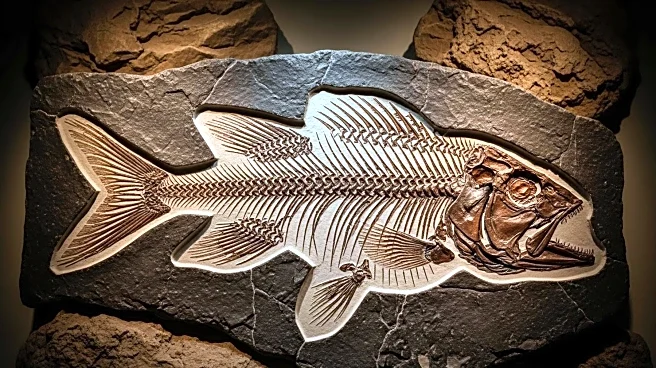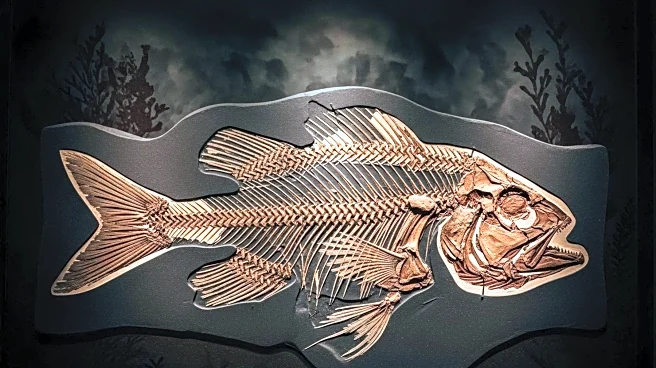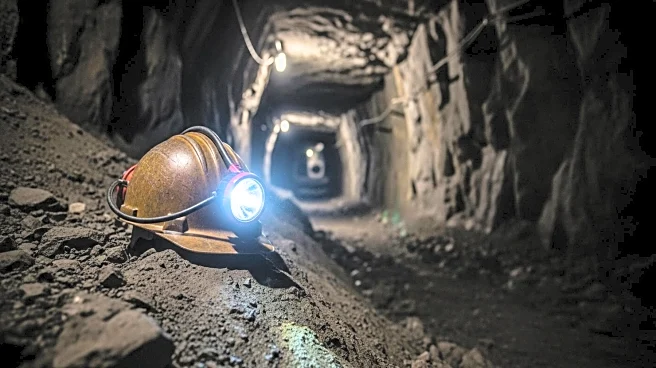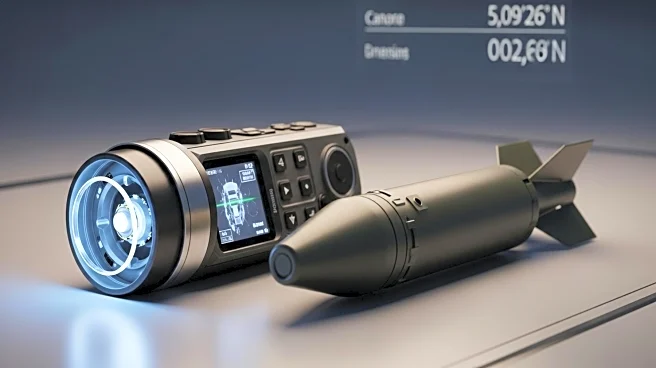What's Happening?
Divers in Indonesia have captured the first underwater photographs of a living Sulawesi coelacanth, a species thought to be extinct for 70 million years. The coelacanth, known as a 'living fossil' due to its ancient evolutionary roots, was spotted at a depth of 144 meters off the coast of North Maluku. This discovery, published in Scientific Reports, marks a significant milestone in marine exploration and evolutionary research. The coelacanth's presence in the mesophotic zone, a deep-water band where sunlight fades, highlights its adaptation to a unique and often overlooked ecosystem.
Why It's Important?
The discovery of the coelacanth in Indonesia expands our understanding of marine biodiversity and the distribution of ancient species. It underscores the importance of deep-sea exploration in uncovering hidden ecosystems and species that have survived for millions of years. The coelacanth's evolutionary significance, as a close relative of land vertebrates, provides valuable insights into the transition from aquatic to terrestrial life.
What's Next?
Researchers plan to return to the site with non-invasive sampling tools to study the coelacanth's genetic makeup and ecological role. Conservation efforts may be necessary to protect this vulnerable species from threats such as industrial fishing and pollution. The discovery could also prompt further exploration of the mesophotic zone to identify other ancient species.
Beyond the Headlines
The coelacanth's survival raises questions about the resilience of ancient species and their ability to adapt to changing environments. It also highlights the potential for undiscovered biodiversity in deep-sea ecosystems, which remain largely unexplored. The discovery serves as a reminder of the importance of preserving marine habitats to protect these evolutionary relics.











